Affiliate disclosure: This post may contain affiliate links. Please see our Privacy Policy.
Natural immune-boosting herbs work to support a healthy immune system, ideally preventing illness or speeding recovery. Staying healthy starts well before flu season, and all of these herbs for the immune system can play a helpful role.
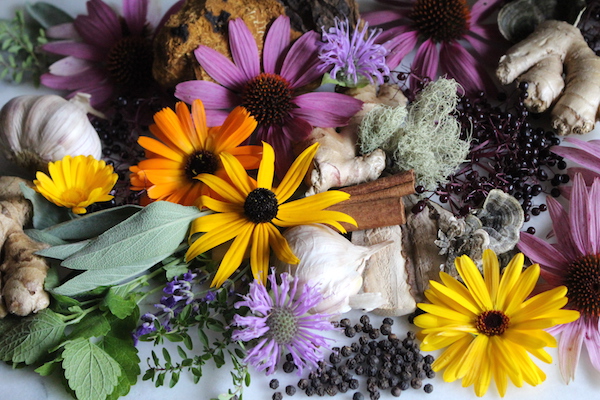
Immune-boosting herbs are a big part of my families’ wellness routine, and we need all the help we can get with a doorknob licking toddler and extra snuggly preschooler in the house.
Even before children, natural immune boosters were a regular part of our lives. I worked in a hospital, and my husband flew cross country regularly for work. While handwashing and other preventative measures are obviously the first step, sometimes you need a bit of extra help when you’re surrounded by sick people on a day-to-day basis.
Just recently, I found myself making a batch of our favorite herbal immune booster…elderberry syrup. I’d harvested fresh elderberries in our garden that we’d grown from cuttings, and I started looking around for other herbs for the immune system to add into the mix. A short walk around the garden and nearby woods and I’d picked more than 20 different immune-boosting herbs, flowers, roots, mushrooms, and lichen.
Add in a stop at the spice cabinet for immune-boosting spices like ginger, black pepper and garlic and I had quite the spread to choose from…
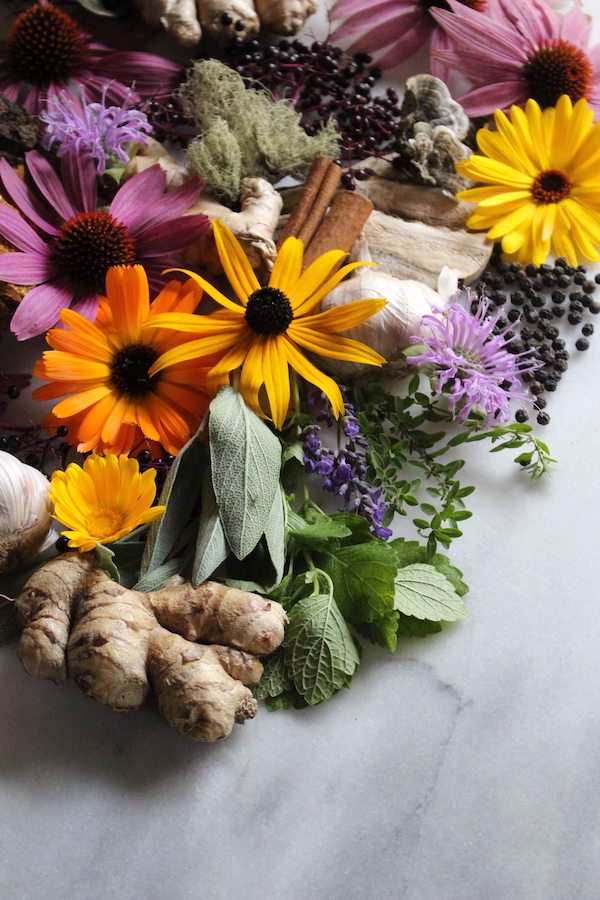
(Note: I am not a clinical herbalist or healthcare provider. This is based on my own experience and research, but I encourage you to verify it with other sources. Please consult a healthcare provider before beginning any health regimen, herbal or otherwise.)
Herbs for the Immune System
Herbs for the immune system generally fall into three categories:
- Immune Stimulants ~ Generally used for a short period of time, immune stimulants are best used on a short-term basis. The best time is right as you’re starting to get sick, or anytime you’ve been exposed to an illness. Those times when someone coughs right on you, or you’re about to go on a long flight where there may be extra pathogens in the recirculated air. Examples include Echinacea and usnea lichen.
- Herbal Immunomodulators (or Immune Tonics) ~ Often used over a long period of time, immunomodulators are tonics for the immune system. They’re not meant to be overtly healing during acute illness, but rather to help balance your system and promote a healthy immune response. Examples include tulsi (holy basil) and reishi mushrooms.
- Anti-Microbial Herbs ~ While they may not directly impact the immune system, they’re helpful in treating illness and maintaining health. While prescription antibiotics have their place, minor illnesses (or injuries) can be treated with anti-microbial herbs instead.Some are specifically antifungal (for topical issues) while others are more generally antimicrobial. These deserve an article in their own right, and I’ll cover them briefly at the end.
While these three classes of herbs are somewhat different from each other, the terminology often gets mixed, even in peer-reviewed scientific journals. Some, in fact, fall into multiple categories. The main thing to keep in mind is that not all herbs are for long-term use and not all herbs for the immune system will have a direct impact if you’re already sick.
There are a lot of factors in our daily lives that affect our immune system. Stress, anxiety and even feelings of social isolation can negatively impact your immune system, along with exposure to toxins and all manner of other environmental factors. That is just too much to cover, and we’ll assume that all things being equal, you’re doing your best to live a low-stress life and are otherwise taking care of yourself.
Exercising, eating right, getting outside and regularly playing in nature. All the good stuff.
Once you’ve got the basics covered, here are a few immune-boosting herbs that have been shown to help support a healthy immune system. (I’ve also thrown in a few spices, roots, lichen and mushrooms too, for good measure.)
Ashwagandha (Immune Tonic)
An ancient ayurvedic herb, ashwagandha has a long history of medicinal use. It’s an adaptogen, which means it helps your body cope with whatever life throws at it.
Studies show that “Ashwagandha improves the body’s defense against disease by improving the cell-mediated immunity. It also possesses potent antioxidant properties that help protect against cellular damage caused by free radicals.” It also “acts as an immunomodulator and hence can enhance life span of cancer patients, where lowered immunity states of the patient are the cause of concern.”
Known as Indian ginseng, it can increase stamina, improve memory and that it has anti-tumor effects.
We grow ashwagandha in our Vermont garden as an annual, it’s not hard to harvest your own even in cold climates.
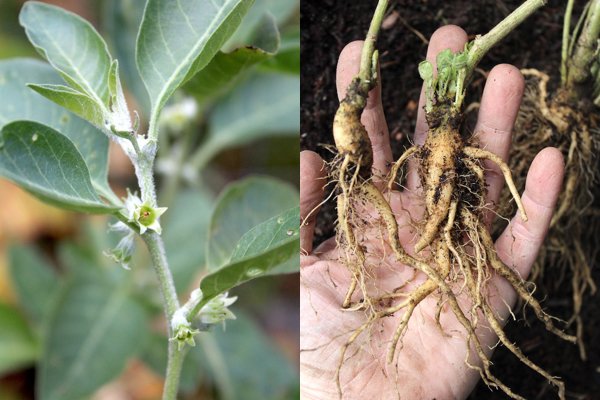
Astragalus (Immune Tonic)
Another adaptogen, astragalus is well known in eastern and western herbalism for its immune tonic properties.
A study in humans found that Astralagus helped in “priming for a potential immune response as well as its effect on blood flow and wound healing.”
Two different studies in mice/rats confirm its immune-modulating effects. In one study, Astralagus boosted the immune systems of both healthy and immune-compromised mice Another study on rats with cancer found that “polysaccharides of Astragalus present significant immune-modulating activity, thus supporting the popular use…”
As a plant in the bean family, it’s both a medicinal herb and a food. The sliced roots, either harvested fresh or purchased dried, can be cooked into soups or added to all manner of dishes, which makes it easy to incorporate astragalus into your diet. (It’s also commonly taken as a supplement.)
While I had intended to grow astragalus as an annual in our garden, it’s come back year after year from tiny pieces of roots left in the soil post-harvest. I’d been told it was only marginally hardy here, but it weathers our zone 4 winters like a champ.
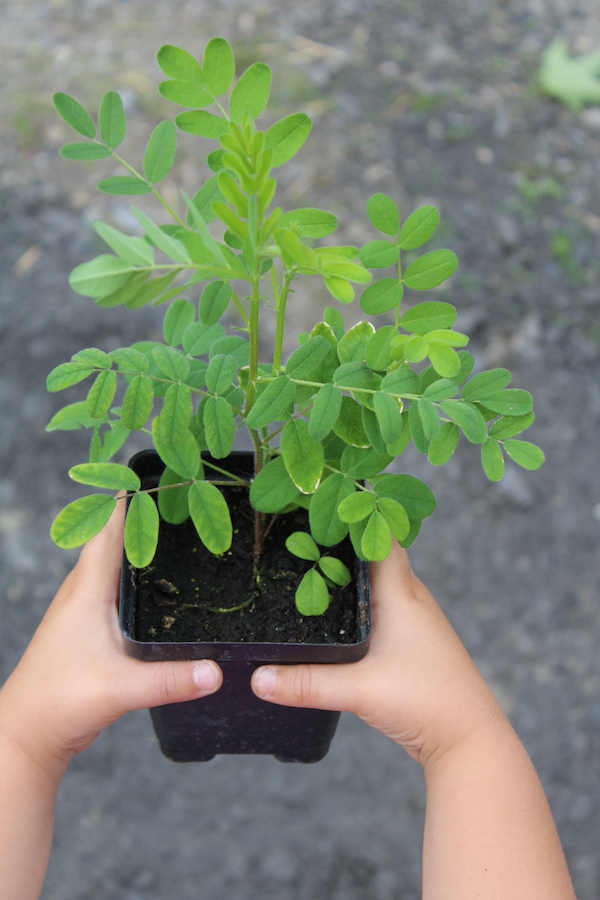
Calendula (Immune Tonic)
The beautiful glowing yellow/orange flowers of calendula brighten up any garden, and they’re both edible and medicinal.
Calendula is usually used topically in creams and oils for its anti-microbial, anti-fungal and anti-inflammatory properties. You’ll see it made into all manner of lotions, creams and healing salves.
Beyond their topical anti-microbial uses, the dried whole flower heads have been used as an immune tonic for centuries. According to the Chestnut School of Herbal Medicine:
“The whole flowers can also be dried and added to soups and stews as a winter immune tonic. This traditional folk use heralds from medieval Europe, where the flowers were likewise added to bread, syrups, and conserves. In the classic 1863 text The Complete Herbal, Nicholas Culpepper wrote,
‘The flowers, either green or dried, are much used in possets, broths, and drink, as a comforter of the heart and spirits, and to expel any malignant or pestilential quality which might annoy them.'”
Modern herbalists often add calendula to nourishing winter broths, and sometimes incorporate other savory immune-stimulating mushrooms like turkey tail or reishi to boost the effect. Try this herbal healing mushroom broth, which contains calendula as well as a mix of other immune-boosting herbs and mushrooms.
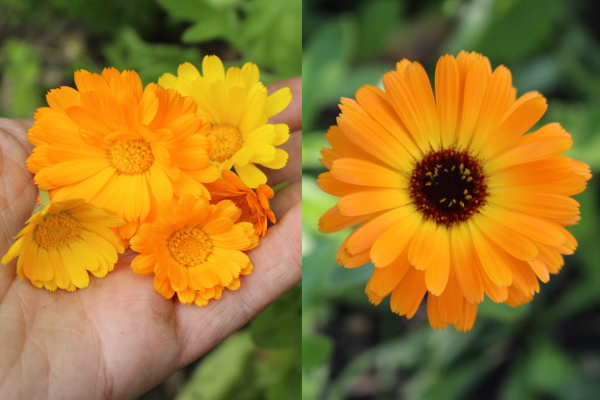
Chaga (Immune Tonic)
Perhaps the best known of the many medicinal mushrooms that grow on birch trees, Chaga mushrooms are being studied for all sorts of potential health benefits.
According to WebMD, Chaga has antioxidant properties and has the potential to stimulate the immune system, as well as lower blood sugar and cholesterol. It’s also studied for potential anti-cancer treatments.
One study found that a tea made from Chaga boosted the immune function of immunosuppressed rats, and noted that “These results strongly suggest the great potential of the aqueous extract from Inonotus obliquus as immune enhancer during chemotherapy.”
As with most medicinal mushrooms, the most common way to take it is in a double extraction tincture, since some of the compounds are alcohol soluble, while others are water-soluble.
The mushroom compounds are first extracted in alcohol and then extracted by prolonged boiling. The alcohol extract is then added to the cooled water extract in a ratio that preserves both.
The result is then sold under the name Chaga tincture or Chaga extract.
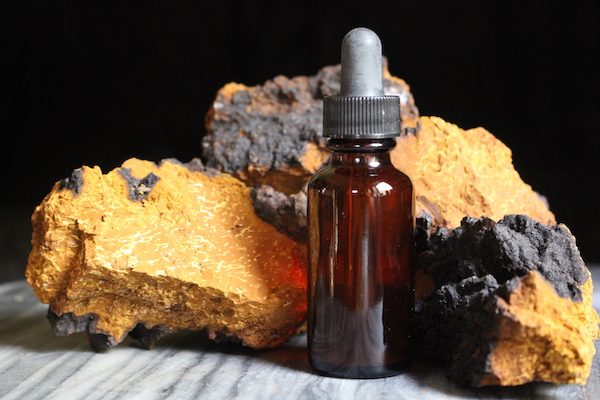
Echinacea (Immune Stimulant)
Provided you haven’t been living under a rock for the last decade, you’ve already heard about the immune-boosting properties of echinacea. It’s by far the best-known herbal immune stimulant, and it’s widely accepted even by the medical community as a powerful herbal tool.
A study reviewing the medicinal benefits of echinacea concluded that,
“The consensus of the studies reviewed in this article is that echinacea is indeed effective in reducing the duration and severity of symptoms…”
But the researchers also noted that there’s some debate as to which preparations (tincture, tea, etc) and which parts of the plant (flowers, roots, leaves, etc) are most effective.
I make our homemade echinacea tincture from flowers/leaves that I harvest from our own plants, and then I add in a bit of purchased dried echinacea root just to be on the safe side.
A cup of pure echinacea tea can be a bit abrasive, but it’s lovely if you add in a bit of lemongrass. (Elderberry and rose hips work too, as in this recipe for winter immune support tea.)
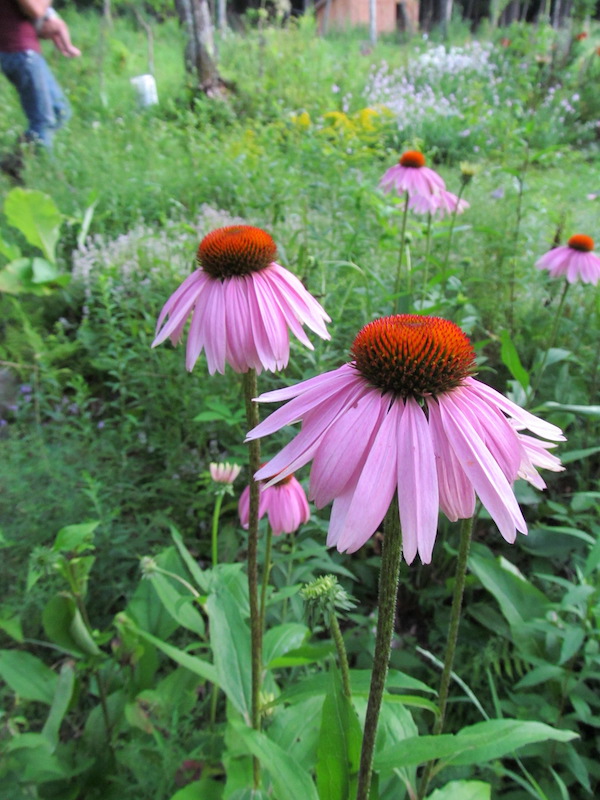
Elderberries (Immune Tonic)
While echinacea is an immune stimulant that’s best taken to combat illness, elderberries are perfect as a year-round immune tonic. That’s convenient because while echinacea tastes like medicine (translation…horrible), elderberries are a tasty and versatile berry with a wonderful flavor.
Like many berries, they’re antioxidant, but elderberries have also been shown to boost immune function. Numerous studies document the almost miraculous benefits of elderberry syrup.
In a placebo-controlled study on flu patients found that with a tablespoon (15 ml) of elderberry syrup taken 4x per day, “Symptoms were relieved on average 4 days earlier and use of rescue medication was significantly less in those receiving elderberry extract compared with placebo. Elderberry extract seems to offer an efficient, safe and cost-effective treatment for influenza.”
While elderberry syrup is one of the most popular preparations, there are literally dozens of other ways to take it.
- Bake up a whole elderberry pie, using either fresh or rehydrated dried elderberries.
- Make an old-fashioned elderberry oxymel with raw cider vinegar and honey.
- Elderberry gummy bears are incredibly easy, and only take about 20 minutes to make at home. (They’re also available commercially, and mixed with other immune-boosting herbs.)
- Cooking up an elderberry jelly lets you take your medicine on your morning toast.
- These days we don’t often drink our herbs, but historically herbal ales and meads (honey wine), like this elderberry mead, were the preferred methods.
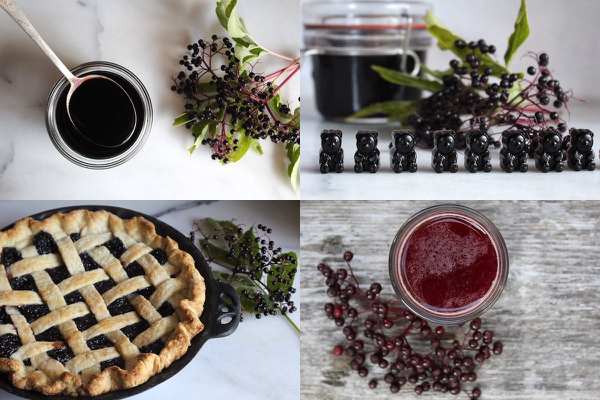
Garlic (Immune Stimulant and Antimicrobial)
Let your food be your medicine, and garlic is a tasty way to make it happen.
Garlic has been a part of folk medicine for millennia, but modern science is just beginning to confirm its medicinal benefits. Don’t believe it? Listen to what the scientists have to say…
“Garlic (Allium sativum) has been used for centuries as a prophylactic and therapeutic medicinal agent. Importantly, garlic has been suggested to have both cancer-preventive potential as well as significant enhancing effects on the immune system… these observations are supported experimentally both in vitro and in vivo…”
A little garlic added to meals is tasty, but you’ll likely need a more concentrated dose for medicinal effects. Homemade fire cider and fermented honey garlic are some of the most popular ways to take a therapeutic dose of garlic.
Fresh organic garlic is often around $18 per pound locally, but we plant garlic every fall and it’s easy enough to grow. Every few years we try a new garlic variety, and it’s amazing how varied the flavors (and colors) can be.
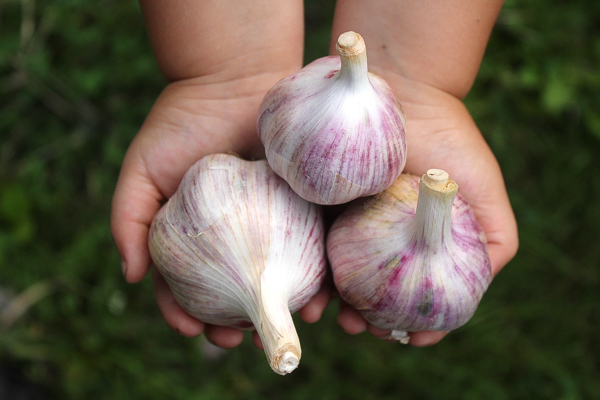
Ginseng (Immune Tonic)
Ginseng is one of the few immune tonic herbs that we don’t grow ourselves, though we could on our woodland homestead. There are detailed instructions for cultivating ginseng in the book Farming the Woods, one of my favorite permaculture books.
It takes years to mature and has been overharvested to near extinction in the wild. It’s tightly regulated at the federal level, which means that it can be tricky to purchase unless you’ve got a gold bar hidden in the back of your closet.
With so many other immune-boosting herbs available, I don’t honestly see any compelling reason to opt for this both threatened and prohibitive expensive species.
Nonetheless, it’s been used for millennia, and no list of immune-supportive herbs would be complete without ginseng.
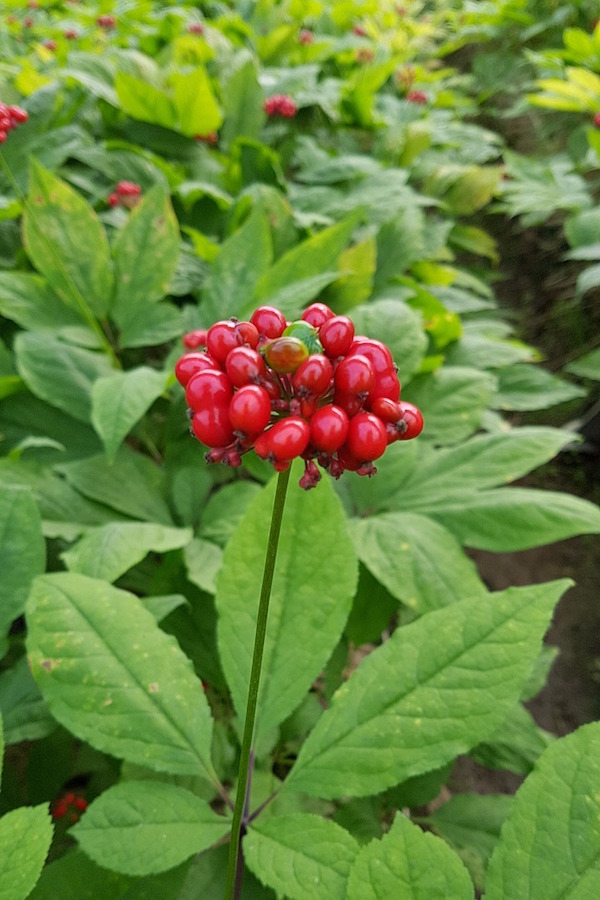
Japanese Honeysuckle (Immune Stimulant and Antimicrobial)
Just the opposite of ginseng, Japanese honeysuckle is an invasive species that has spread around the world. Once you’ve positively identified the plant, feel free to harvest as much as you need without the risk of really damaging this incredibly prolific flower.
Be aware though, as with other medicinal invasive species (ie. Japanese Knotweed), it’s important to be sure that it hasn’t been sprayed with herbicides.
Japanese honeysuckle is one of the few immune stimulant herbs, and it’s also antimicrobial. Most of the studies on its effectiveness are done in livestock or food animals, as organic farmers look for more natural ways to keep their animals healthy.
There have been studies in egg-laying chickens, as well as aquaculture projects for fish and shrimp, all of which concluded that Japanese honeysuckle is a natural immune stimulant and/or antioxidant agent.
The bees and other pollinators love honeysuckle, largely because it’s sweet and fragrant. That makes it a tasty medicine, and it’s prepared in all manner of ways. Most commonly though, as infusions or extracts such as Honeysuckle Glycerite or honeysuckle vodka.
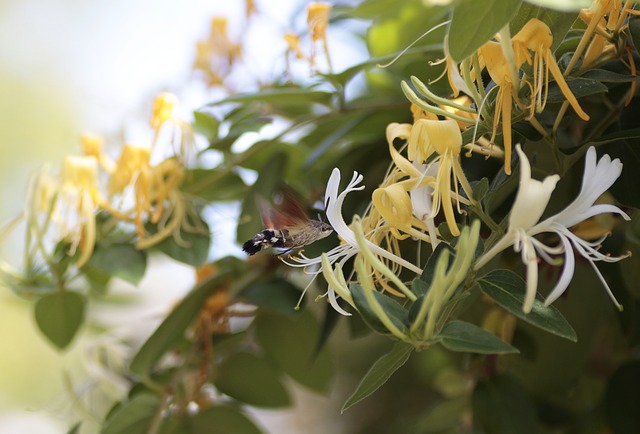
Lion’s Mane Mushroom (Immune Tonic)
There’s a lot of promising research into the medicinal uses of lion’s mane mushrooms. Researchers are especially excited about their ability to improve cognitive function in Alzheimer’s patients, as well as regulate blood sugar for diabetics.
Studies show that they also happen to be an immune tonic, adding yet another reason to seek out this awesome mushroom.
Though they’re supposed to be somewhat rare in the wild, we have plenty of them on our 30 acres. Lion’s mane mushrooms are easy to identify, and the bright white shaggy fungus is hard to miss.
If you can’t find them in the wild, there are always mushroom supplements. Host Defense makes a lion’s mane mushroom capsule as well as a comprehensive immune support capsule containing many different immune-supporting mushrooms.
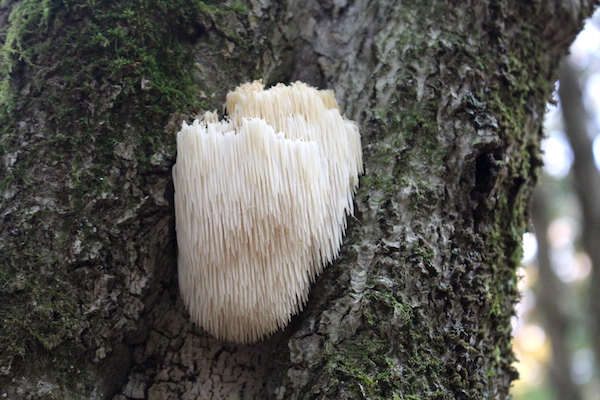
Myrrh (Immune Stimulant and Antimicrobial)
While there are plenty of immune tonics, there are very few natural immune stimulants. That’s one reason myrrh has been valued by humans for millennia.
Topically, it’s a local antiseptic, but it’s also used internally for a variety of issues. Studies show that “myrrh acts as an antiseptic, anti-inflammatory, and a circulatory and immune system stimulant.”
Studies are a bit mixed, however, and using myrrh over a long period of time can actually do more harm than good. Add in a few potential side effects, and negative drug interactions and it’s not something I feel comfortable using at home.
My preference is to stick with herbal immune boosters that I can grow and harvest in my own neighborhood, but I know plenty of people that sing the blessings of myrrh and use it in their home herbal practice. To each his own, and do your research before trying any herbal remedy.
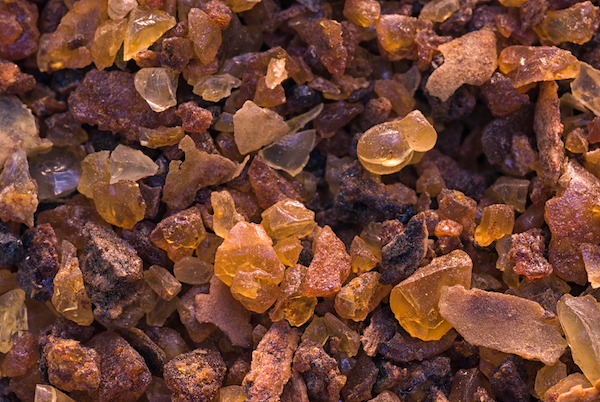
Reishi Mushroom (Immune Tonic)
Reishi mushrooms are plentiful, and they seem to sprout out of just about every hemlock stump on our land all at once in early summer. We collect them by the bucket load, drying some in slices for winter immune-boosting teas, and dicing up others fresh for a double extraction reishi tincture.
While many medicinal components are only alcohol soluble, reishi’s immune-boosting properties happen to be water-soluble. A simple tea is an effective way to consume reishi, like this one from traditional medicinals.
Reishi’s water-soluble polysaccharides have been shown to boost immune response, especially in relation to cancer cells. Studies show that “The polysaccharides from G. lucidum are believed to trigger an indirect antitumor mechanism in which the host immune system is altered to target the tumor cells.”
Specifically, a type of polysaccharide in reishi mushrooms known as beta-glucans “has the ability to induce both innate and adaptive immune responses…triggering a series of molecular pathways…which in turn, activate the host immune response for immune cell proliferation.”
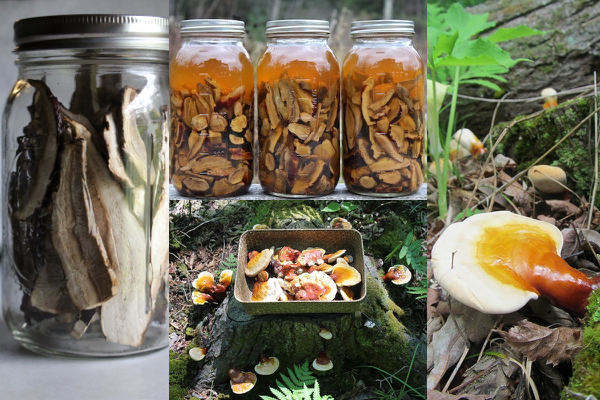
Schisandra (Immune tonic)
Also known as five flavor berries, Schisandra berries have all 5 flavors (sweet, salty, bitter, sour and umami). They are a traditional Chinese medicinal fruit, and they’re consumed fresh or dried for medicinal use. They’re hardy to zone 4, and we’re planting some this spring from Fedco seeds. Our local coop sells them in the bulk section, not too far from dried elderberries and echinacea.
A study on Leukemia patients with weakened immune systems found “S. chinensis may be therapeutically beneficial by promoting humoral and cell-mediated immune responses.”
It’s classed as an adaptogen, and it’s also traditionally used to promote longevity, regulate blood sugar and speed recovery after surgery (source).
Since Schisandra is an immune-supporting berry, it’s commonly just eaten as a food. Like elderberries though, it can be hard to find it fresh, so it’s usually purchased dried.
From there, it can be used in recipes like these:
- Immune Boosting Schisandra Syrup
- Schisandra Pastilles (Honey Tabs)
- Korean Schisandra Tea (Omija tea)
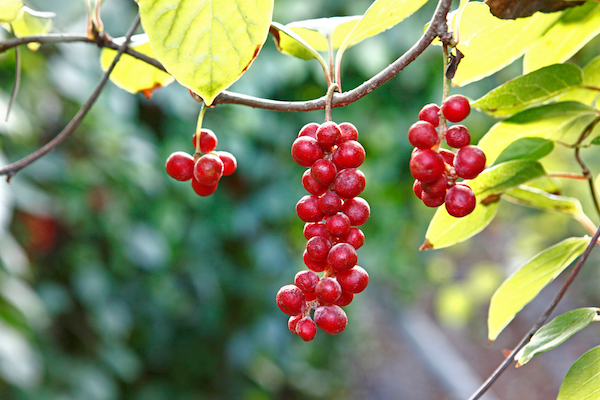
Shiitake Mushroom (Immune Tonic)
Perhaps the most commonly available immune-boosting mushroom, just about every grocery store sells shiitake mushrooms. They last for weeks fresh, and they can be dried to store even longer.
We grow shiitake mushrooms on maple logs in our woods, and my daughter especially loves checking for mushroom flushes. She’ll get out her basket and fill it before doing a celebratory mushroom dance. I’ll admit she’s doesn’t even like mushrooms, but there’s something magical about seeing edible (and medicinal) appear out of the side of a dead log.
In one study, participants ate shiitake mushrooms for 4 weeks. They concluded that regular consumption of shiitake mushrooms “resulted in improved immunity, as seen by improved cell proliferation and activation and increased sIgA production. The changes observed in cytokine and serum CRP levels suggest that these improvements occurred under conditions that were less inflammatory than those that existed before consumption.”
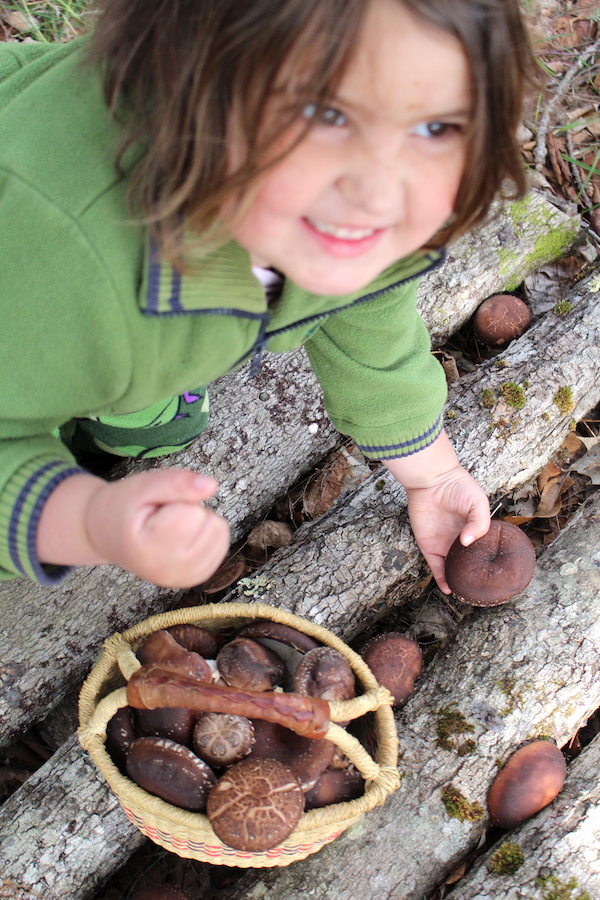
Spilanthes (Immune Stimulant and Antimicrobial)
The past few years I’ve seen spilanthes seedlings for sale at local plant sales, right along with other medicinal herbs. It’s always labeled “toothache plant” because it’s traditionally used for tooth pain, but it also has another potentially more important medicinal benefit.
Spilanthes is one of the few plants known to stimulate the immune system, actually spurring it into action rather than just acting as a tonic.
A study in mice concluded that spilanthes “significantly activated macrophages and enhanced their function compared to control, suggesting this herb as a potential natural drug for immunostimulant effect.”
Urban Moonshine makes a spilanthes throat spray, which combines it with sage (antimicrobial) and usnea (Immune boosting & respiratory support). I’ve started using it anytime I feel a bit under the weather, just for an extra boost during cold and flu season.
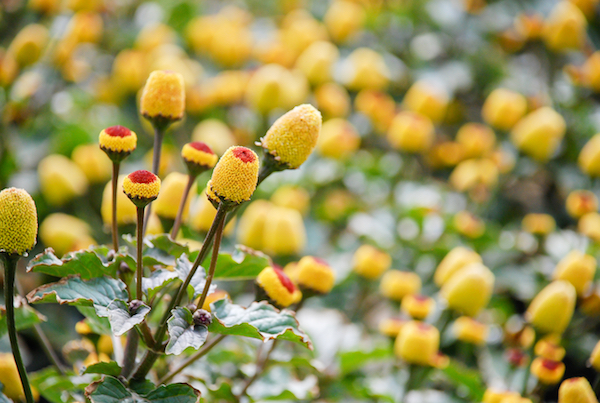
Tulsi or Holy Basil (Immune Tonic)
A well-known adaptogen, tulsi helps the body adapt to stresses of all kinds. I used it daily during my pregnancies to help alleviate stress and balance my blood pressure. For me personally, it has a profound calming effect.
Since stress and anxiety can actually weaken an immune system, tulsi is worth considering just from that perspective. But it has more to give…tulsi is also an immune tonic herb!
A study on healthy volunteers concluded that tulsi extract is an immune tonic. Their conclusion read, “These observations clearly ascertain the immunomodulatory role of Tulsi leaves extract on healthy volunteers.”
We grow tulsi in our garden and in our attached greenhouse, but I never seem to plant enough. When we run out, I supplement with Organic India Tulsi Sweet Rose tea, and that one tastes particularly wonderful after a long day.
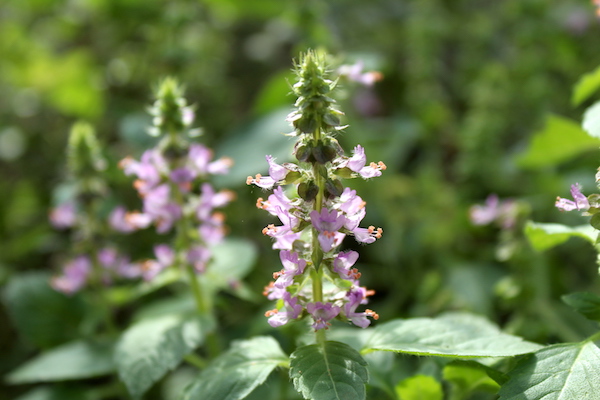
Turkey Tail Mushroom (Immune Tonic)
Named for its ruffled edge, this mushroom looks like an actual turkey tail. Though it’s incredibly common throughout the world, it can be a bit tricky to identify turkey tail mushrooms since there are so many look-alikes.
The immune tonic functions of turkey tail mushrooms are well documented, and a study documenting the medicinal properties of turkey tail notes that “Numerous in vitro and in vivo studies show enhancement of immune functions, antiviral effects, and cholesterol-regulating effects, among others.”
Host defense makes convenient turkey tail mushroom capsules for immune support. You can also try making your own turkey tail tincture, assuming you learn to positively ID this wild mushroom (be careful, and as with any wild mushroom, make sure you’re 100% confident in your identification).
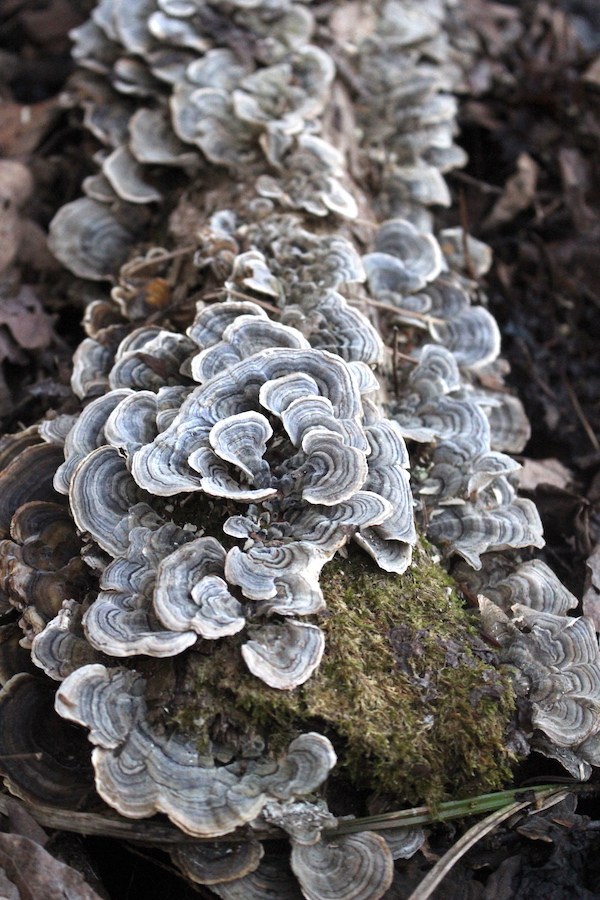
Usnea (Immune Stimulant and Anti-Microbial)
Usnea is a medicinal lichen that’s both an immune stimulant as well as anti-microbial.
Historically, usnea was used as a wound dressing in the field, and modern studies confirm its anti-microbial properties.
Taken internally, usnea extracts have immune-stimulant properties. It’s also considered anti-inflammatory and is traditionally used in herbal cough medicines for respiratory support.
A number of herbal throat sprays use usnea, including this one from Urban Moonshine, and another from Honey Gardens Apiaries (both local Vermont companies).
Our woods are full of usnea, but it’s often high up in the canopy. I’ll often find it clinging to broken branches after wind storms, and I carefully check the tops of trees we cut for firewood. With that, I’m able to make our own homemade usnea tincture.
(Note: There are a lot of types of lichen, be sure to positively ID usnea before using. Article on that topic coming soon.)
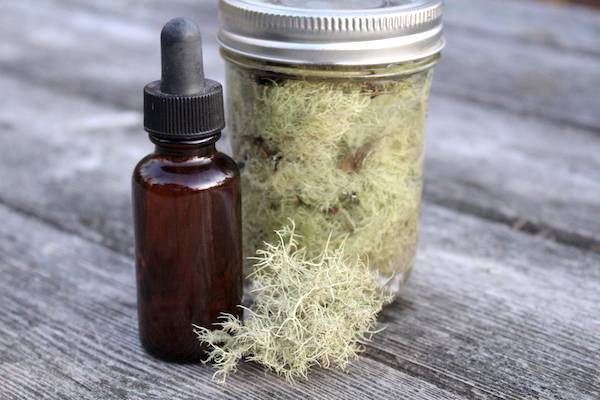
Antimicrobial Herbs
Though somewhat different, anti-microbial herbs can play an important role in aiding the immune system fight off illness. Herbal antimicrobials can also play a big role in illness prevention.
For example, the active ingredient in Seventh generation Anti-Microbial surface wipes is Thymol, or basically thyme essential oil. They claim that these wipes kill 99.99% of cold and flu viruses, which is the same as a pack of Clorox surface wipes made with bleach.
Still, in many ways, they’re a separate topic, but here’s a brief list to get you started:
Bearberry or Uva-Ursi ~ Generally taken to treat urinary tract infections, bearberry’s antimicrobial compounds travel through your digestive system and work against pathogens in the bladder during a UTI.
Bee Balm or Wild Bergamot ~ Not just a beautiful native flower, bee balm has a number of uses, both medicinal and culinary. It’s antimicrobial and antispasmodic, which makes it an excellent choice for treating coughs, and anti-inflammatory properties mean it’s good for topical injuries as well.
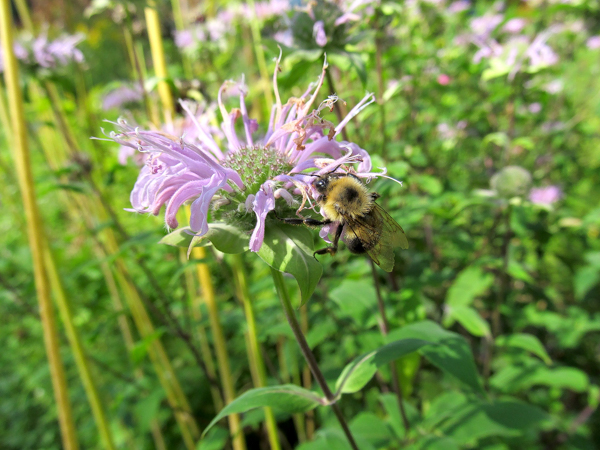
Black Pepper ~ Originally added to meat more as a preservative than a seasoning, meats in ancient times were completely crusted in black pepper for storage as an anti-microbial to help ward off spoilage before refrigeration. These days it’s just a tasty sprinkle at the table, but that doesn’t mean it’s not still acting against microbes.
Black Walnut ~ The outer green outer husks of wild and cultivated black walnut are anti-microbial and anti-fungal. It’s usually made into a black walnut tincture.
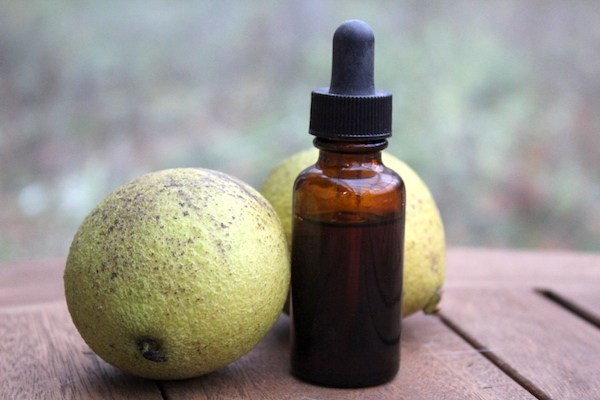
Calendula ~ As noted above, calendula is an immune tonic, but it’s also commonly used as a topical anti-microbial.
Chamomile ~ Though it’s most commonly used in soothing bedtime teas, common chamomile is also anti-microbial.
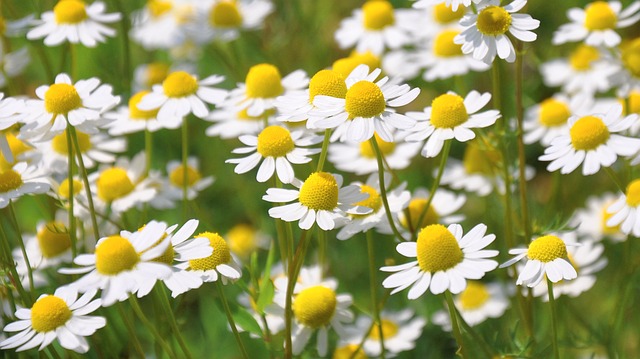
Cinnamon ~ Commonly included in elderberry syrups and tinctures for flavor, it also happens to have anti-microbial compounds.
Clove ~ Another aromatic kitchen spice that happens to be medicinal.
Elder ~ Elderberries are the best known, but both elderflowers and elderberries have anti-microbial properties.
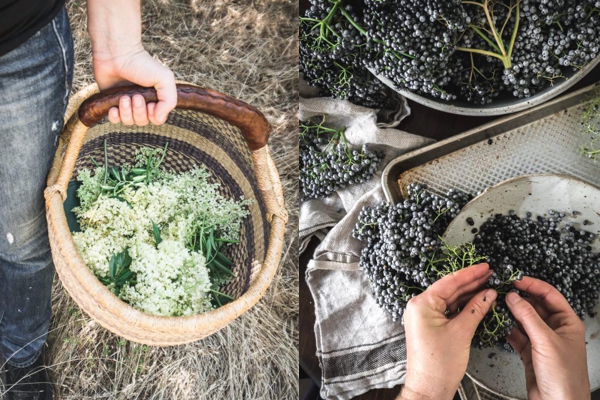
Eucalyptus ~ Most people know eucalyptus from things like Vics Vapor Rub, where it’s used for lung support. It also has topical anti-microbial uses.
Sage ~ Sometimes included in anti-microbial throat sprays, sage also gives herbal remedies great flavor. Not for use during pregnancy.
Garlic ~ Perhaps one of the best known anti-microbial herbs.
Ginger ~ The warming flavor of ginger tea is delicious in the wintertime, and it’s working double duty to help you get well.
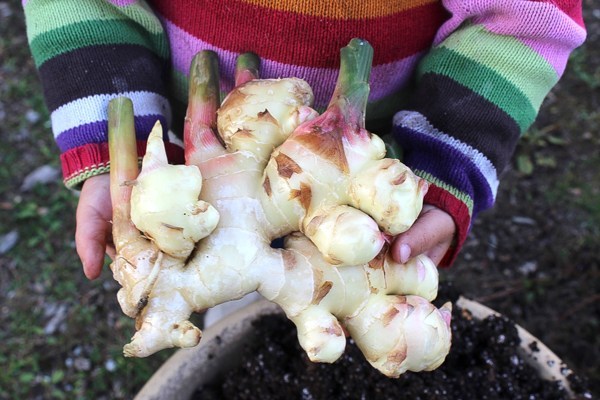
Goldenseal ~ Incredibly expensive to buy, goldenseal is commonly used in tinctures with echinacea.
Hyssop ~ We grow it in our garden for the beautiful flowers, the anti-microbial impacts are just a bonus.
Juniper ~ Historically used to make brewing vessels for homemade mead (honey wine) and other nordic brews, juniper was also traditionally used for cleaning (and modern science is backing up its anti-microbial properties.)
Lavender ~ It’s good for more than just incense and perfume…
Lemon Balm ~ An incredibly prolific summer herb, it can be tricky to find enough ways to use lemon balm. Homemade anti-microbials are a great solution.
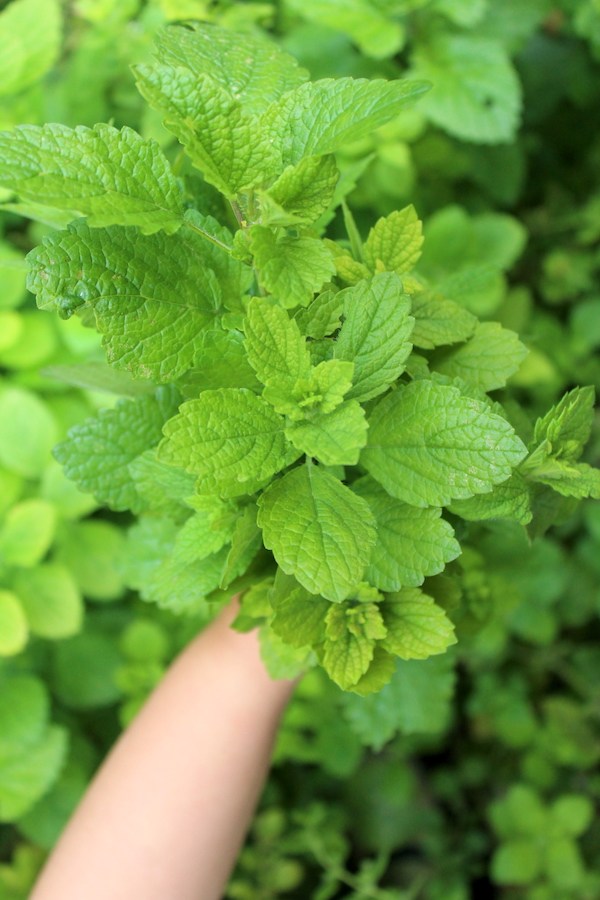
Rosemary ~ Homemade herbal Vicks vapor rub type decongestants use rosemary right along with eucalyptus, and it also happens to be a topical cleanser.
Thyme ~ Another kitchen herb with anti-microbial properties, thyme is also the best decongestant I know!
Usnea ~ Mentioned above for its immune-stimulant properties, it’s also used as an anti-microbial herb.
Yarrow ~ Used since ancient times to stanch bleeding, yarrow also helps disinfect wounds.
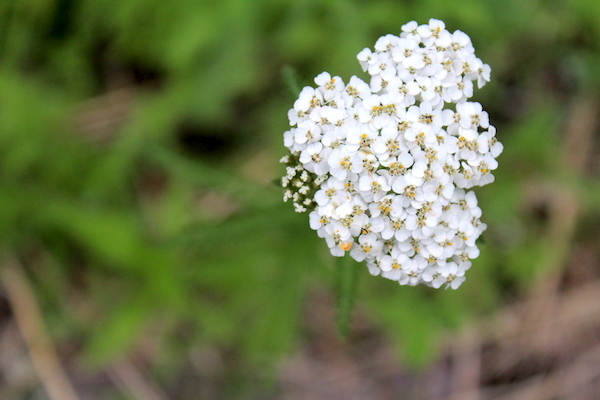
Most of these anti-microbial herbs would be a good addition to homemade hand sanitizer, as well as homemade herbal hand soap.
More Resources
Looking for further reading on herbal immune support?
- Herbal Academy Introductory Herbalism Course ~ A great place to start if you’re looking to learn more about identifying, preparing and using medicinal herbs. They also offer intermediate and advanced courses, all online.
- Herbal Academy Mushrooms Course ~ Newly released, this course covers the identification and use of medicinal mushrooms. I received an advanced copy of the lesson on mushrooms for immune support, and it’s really comprehensive.
- Herbal Antivirals: Natural Remedies for Emergent and Resistant Viral Infections ~ “Offers in-depth instructions on how to prepare and use herbal formulations to prevent and treat infections such as SARS, influenza, and encephalitis. These natural remedies will fight off disease and strengthen your immune system, keeping your family healthy and happy.”
- Herbal Antibiotics: Natural Alternatives for Treating Drug-Resistant Bacteria ~ “Explains the roots of antibiotic resistance, explores the value of herbal treatments, and provides in-depth profiles of 30 valuable plants, noting the proper dosages, potential side effects, and contraindications of each.”
Other Great Lists to Read
Liked this list? I’ve got more…
- 50+ Wild Edible Fruits and Berries
- 20+ Edible Weeds in Your Garden
- 70+ Ways to Use Wood Ash
- 40+ Practical Ways to Use Spent Coffee Grounds
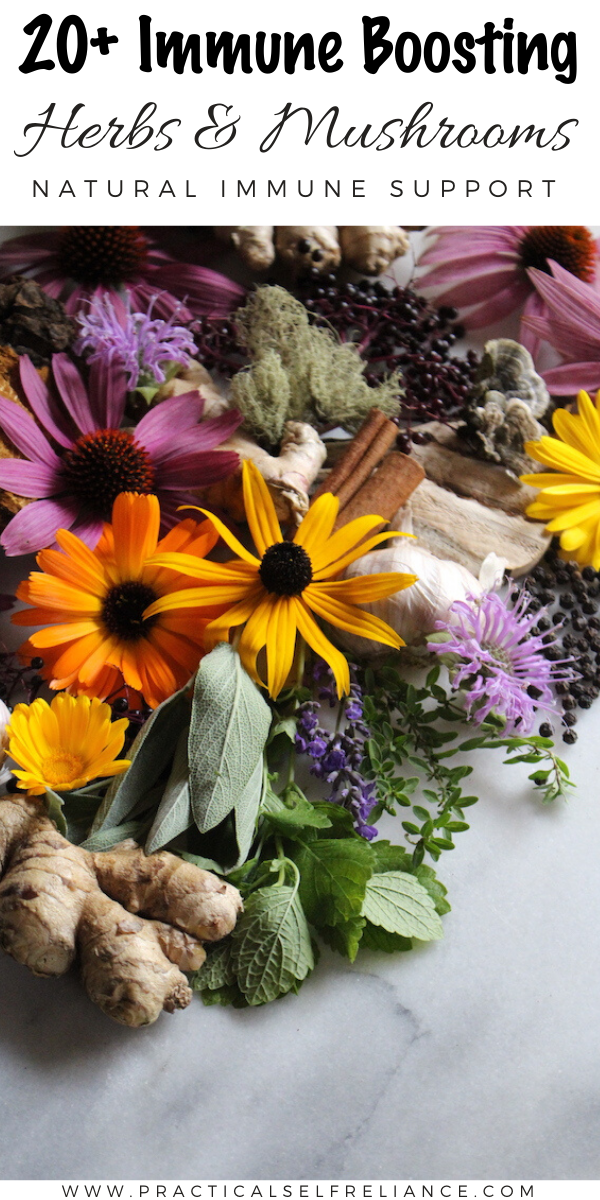


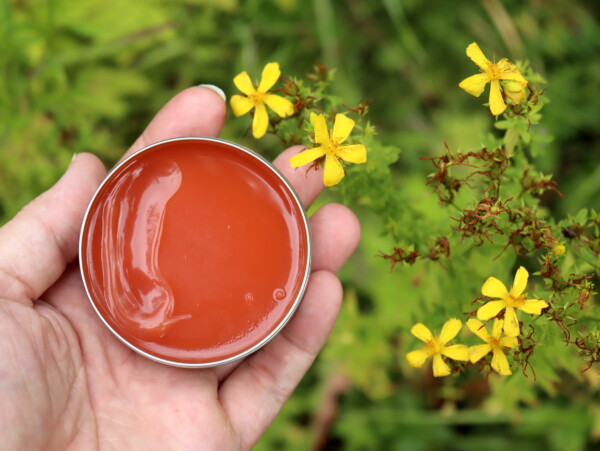
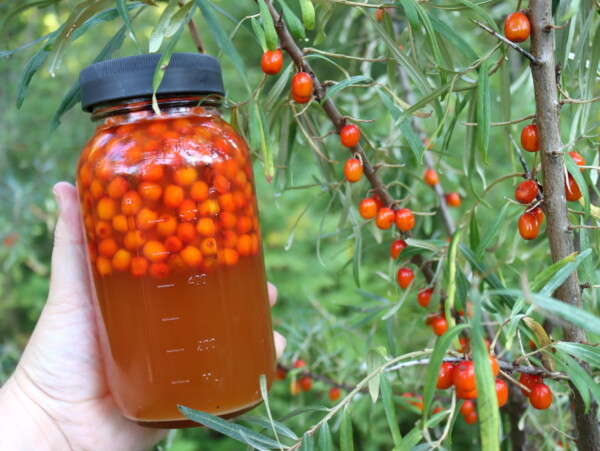










I will certainly use some of this valuable information. Growing mushrooms in Eastern Canada is something l recently researched. Now l know more uses of them. (Your photography is outstanding too!)
My goodness, you are a wealth of information. I dearly appreciate all the time and effort you use to share this valuable information with us. God Bless you and stay safe and healthy.
Thank you so much for those kind words.
Thanks for sharing!